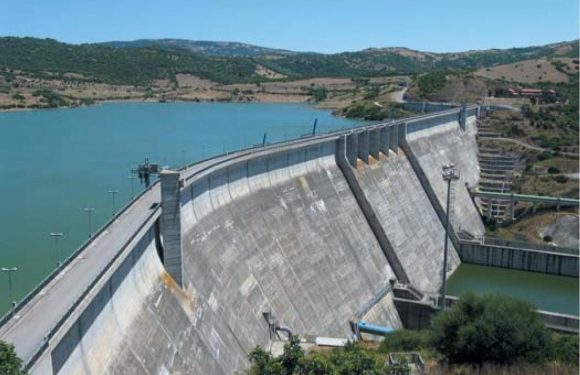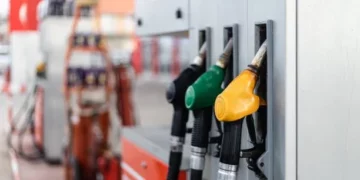Dams for Development? Unpacking Tensions in the World Bank’s Hydropower Policies
Dams have been emblematic of the World Bank’s approach to development for many decades. From the bank’s early years in the 1960s and 1970s, large-scale infrastructure projects such as dams, power plants and transport networks were central to its strategy for economic growth and poverty reduction. This reflected a top-down modernisation paradigm.
But the controversial social, economic and environmental impacts of dams sparked widespread criticism. This prompted internal scrutiny and a reduction in funding by the 1990s. Notable examples included the bank’s withdrawal from India’s Narmada Dam and Nepal’s Arun III hydropower project. Both followed large-scale protests.
From 2007, the bank’s support for dams began to rise again, reflected in an increasing portfolio of projects. There were two main drivers. Hydropower gained renewed appeal as a low-carbon energy source. And infrastructure-led economic growth regained prominence in development policy. Yet, earlier debates were not erased: questions about social, environmental and political consequences continued to influence decision-making.
This begs the question of whether anything has changed. Does the World Bank approach dams differently today? Did past protests and policy reforms have a longer-lasting effect?
We are researchers examining the politics of development, with a focus on dam decision-making in Africa and South Asia. In a recent book chapter we show that debates over dams are far from settled. Reforms have strengthened planning, impact assessment and mitigation. But change has been gradual, contested and layered, reflecting the deeply political nature of large-scale infrastructure projects.
In the book chapter we trace how the World Bank’s approach to dams has shifted over decades. We ask whether reforms have genuinely altered how dams are built and their impacts.
The answer is nuanced. Reforms have improved planning, impact assessment and mitigation. These changes have indeed reduced negative social and environmental effects. But they have been introduced gradually, in layers, without fully replacing older practices.
Some negative impacts continue to be overlooked, and compensation schemes are often inadequate. The balance of trade-offs has shifted. Yet decades of reform have not resolved the tensions surrounding dam-building. These remain hotly debated both within and outside the bank.
This reveals the World Bank as a dynamic institution, shaped by debates and contestations. These take place within the organisation and from governments, communities and civil society. Policy-making and implementation are inherently contested processes. Both require careful negotiation, oversight and engagement.
Our findings highlight the importance of critical engagement and independent research to influence how large-scale infrastructure projects are planned and executed. And to bring alternative perspectives into institutional decision-making.
The evolution of dam-building
In the mid- to late 20th century, the World Bank championed large dam projects as engines of economic growth. The bank supported hydropower and irrigation infrastructure across Asia, Africa and Latin America. These projects often prioritised technical and financial feasibility over social and environmental issues.
The consequences were significant: widespread displacement, ecological damage and resistance from affected communities and advocacy groups.
Civil society, academic research and internal bank discussions increasingly criticised this approach. By the 1990s, development thinking began to shift. Greater emphasis was placed on participation, environmental safeguards, and social inclusion. Concepts such as sustainable livelihoods, social capital, and community-driven development gained traction. Participatory development approaches became more prominent.
The bank increasingly positioned itself as a “knowledge bank”. It began to emphasise data collection and local consultation alongside financing.
New mechanisms were introduced to embed participation and safeguard considerations. These included social and environmental impact assessments and stakeholder consultations. Yet these processes often operated within existing frameworks that continued to prioritise economic and engineering objectives. The result was that technical and financial considerations largely remained central.
Participation or performance?
In theory, local consultation and stakeholder engagement have become integral to the World Bank’s approach to dam development. In practice, however, these processes often serve more as legitimising tools than as genuine mechanisms for power redistribution.
For example, in Nepal, the World Bank’s subsidiary, the International Finance Corporation, promotes sustainable hydropower through stakeholder-based discussions and training programmes. Yet these initiatives frequently exclude key local actors. The focus instead remains on government agencies, industry representatives and international donors.
Similarly, at the Rusumo Falls Dam in Tanzania, resettlement action committees comprising affected communities were established to liaise with project authorities and advise on compensation. The committees provided a formal avenue for local input. But they had limited power to challenge national governments or alter major financial and infrastructural decisions.
In essence the bank co-opts critical voices while proceeding with its own priorities. Local communities can voice concerns. But their influence over the trajectory of development projects remains constrained.
Where change comes from
Scholars have often attributed shifts in World Bank policy to external pressures. These include civil society advocacy, intellectual debates on development and evolving global norms.
These factors certainly play a role. But our research highlights the importance of internal dynamics within the institution.
Competing factions within the bank generate tensions that drive both reform and continuity. For example, financiers focus on lending targets. Engineers prioritise large-scale infrastructure. Others advocate for social and environmental protections.
This internal contestation helps explain why new World Bank dam policies often fail to produce the expected outcomes. Policy evolution is gradual. New priorities layered onto existing frameworks. The result is a mixture of change and continuity.
Far from being a monolith, the World Bank is an institution shaped by ongoing internal debate. Different interests, factions and ideas rise and fall in influence over time.
Rethinking participation
Dams are a microcosm of broader development debates. They demand political choices and trade-offs between infrastructure needs, financing, environmental sustainability, social equity and economic impact.
The World Bank reflects these tensions internally, with competing priorities and factions shaping how decisions are made.
For those interested in meaningful reform, the challenge is to embed more inclusive governance and decision-making. Participation must go beyond token consultation. It should involve genuine power-sharing with affected communities, stronger accountability mechanisms and real influence over project outcomes.









